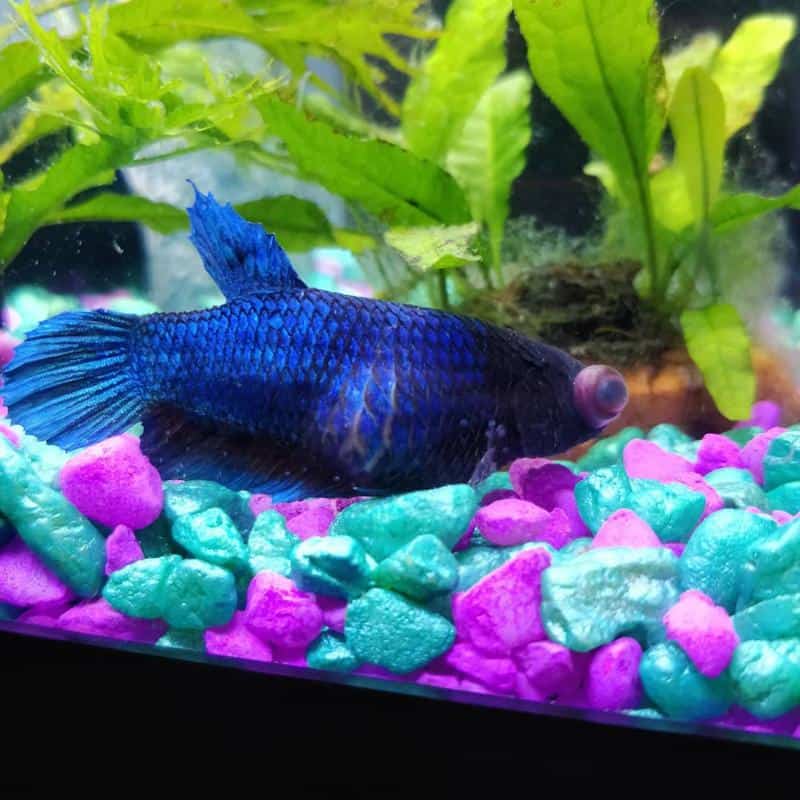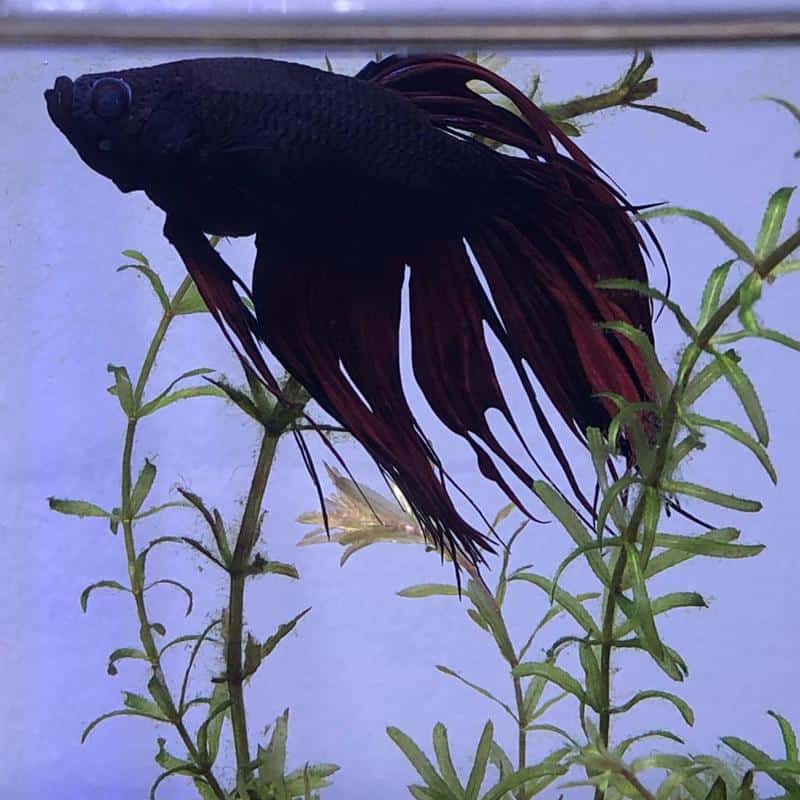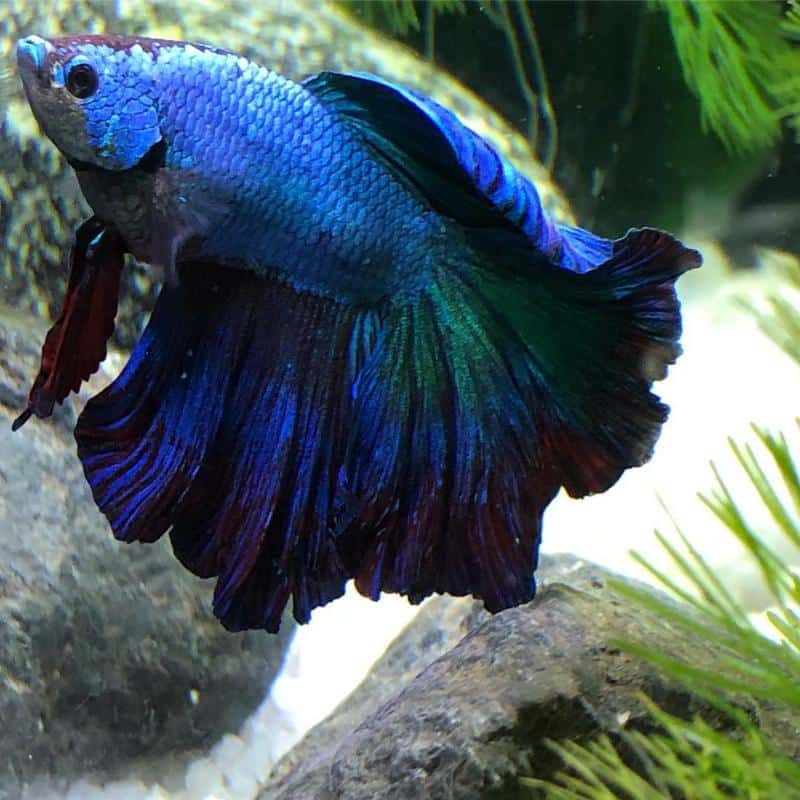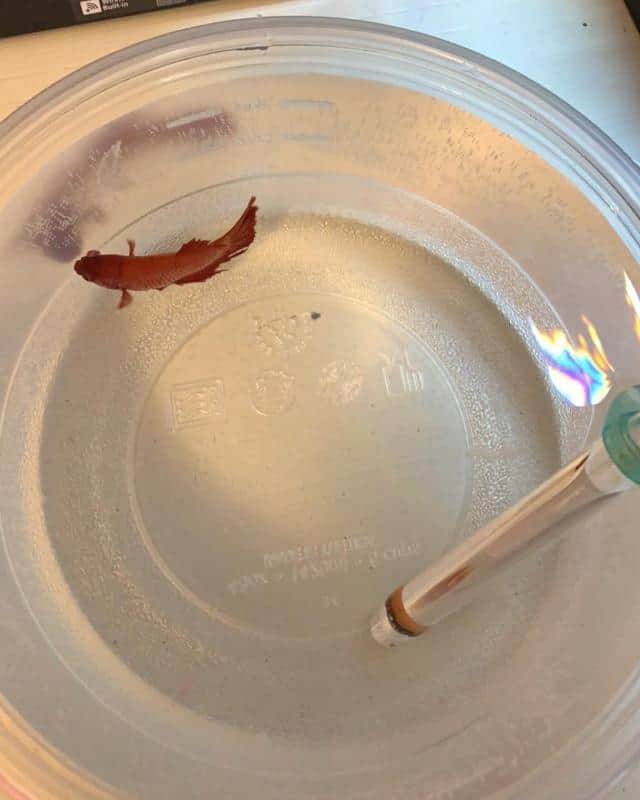Even when you are an experienced fishkeeper, having infections in your tank could be very upsetting. Fish may suffer injuries or develop illnesses despite having the safest tank. Popeye is among these diseases.
While the condition can be triggered by a variety of factors, including infection, it could also be caused by trauma. Popeye may often cause serious health problems and can be deadly, especially if left unaddressed.
The best part is that Popeye can be treated and prevented in a variety of ways. Continue reading to understand everything there is to know about diagnosing and avoiding Popeye for your pet’s safety.
What is Popeye?

The name “Popeye” is used to refer to any disease that makes a fish’s single eye or both pop, swollen, or seem puffy. Exophthalmia is the scientific term for Popeye.
The eye could often appear to be surrounded by a rim or white spots encircling it. A clouded or inflamed eye is another sign of betta fish popeye. Although it could happen to any kind of fish, most people only observe this in betta.
What triggers Popeye is never exactly the same; therefore, it’s important to monitor your pet closely and keep an eye out for any other signs of distress or disease. Finding the source of the popeye might allow you to easily evaluate the situation and find the right remedy.
If not treated, popeye could cause severe health problems, such as eye damage and loss of vision, which will end up killing the betta. If Popeye develops as a result of corneal trauma, the retina could deteriorate, and your betta would be left with a single working eye.
Is Popeye Transmissible?
Popeye isn’t transmittable, but other species in the aquarium could have microbial diseases. Separating the infectious ones benefits everyone. Arrange a separate isolation tank or clean container for your infected betta and transfer it to it.
After that, don’t forget to change 50% of the water in the tank, keep the filtration system in good working order, and refrain from adding any additional species or plant life to the aquarium for 4-6 weeks till your betta has completely recovered.
Causes of Popeye

Popeye can be caused by a variety of factors, depending on the signs. For example, if a single eye swells, this is referred to as a unilateral Popeye. Unilateral is the result of an accident or trauma.
It might happen if your betta hits anything or gets into a battle with fellow species; otherwise, you’re extremely harsh while capturing it in a fish net.
In this situation, it would be wise to examine the water tank of your pet for any pointy edges or items.
Bilateral Popeye damages both eyes and is usually caused by inflammation along with various signs. Popeye may also exhibit these additional symptoms:
- Cloudy vision, retinal loss
- Changes in eye pigment
- Appetite loss
- Lack of social activity
- Inactive, lying down on the bottom of the aquarium
- Floating in the exact location
Checking the temperature should be done as soon as possible if your betta displays any abnormalities. Usually changing the tank’s settings is beneficial.
Injury
Betta fish often get wounds; sometimes, pebbles and other items in the aquarium might be problematic. If you believe that your betta could have an accident, it’s a good idea to remove things that could hurt. Once it is done, swap out the sharp, plastic decoration with smoother alternatives.
In addition, if your aquarium has other species, they could be the reason behind those injuries. Fish frequently engage in conflicts and attack each other. Aquatic species are territorial, which makes them aggressive.
As a result, if you fear that other species have injured them, transfer them to another aquarium.
Infection
Popeye can also occur from infections. Infectious diseases could be brought on by germs, fungi, or viruses in betta fish. Popeye may affect either one or both eyes.
If you’ve got an aquarium full of fish that all exhibit Popeye signs, infection is generally the culprit. The majority of Popeye’s are caused by pathogenic bacteria; therefore, getting treatment immediately is important.
Additionally, make sure they are consuming their meals and look for any other signs, such as lethargy. A serious illness like deadly TB might also show symptoms like Popeye.
Last but not least, a fish should be watched for signs of intestinal problems, such as bloating. Intestinal problems make the condition severe.
What Are the Symptoms of Popeye in Bettas?

You should always keep an eye out for a few noticeable Popeye illness signs.
Eyes Bulging Out
Popeye’s main noticeable sign is single or both eyeballs bulging. In fact, if you only witness this sign, you may be certain that your fish has Popeye.
As was already said, either one or both eyes may be bulging, and you must handle each problem individually.
Changes in Their Eye Color
Your pet fish’s eyes may not only poke out, but they could also change color. They may appear hazy or opaque (only when the retina has burst); however, they may also appear bloodstained.
Physical violence is most strongly linked to a bloodshot eye. If Popeye is not addressed, bettas may have eyes with weird colors and lose their vision.
A White Circle Near the Eye
A white circle or spot within the cornea is a strong warning that your aquatic companion may soon exhibit additional Popeye symptoms. It is a sign that frequently indicates the onset of a serious disease.
Start treatment right away if it is the initial stage of the disease to offer your pet the highest possibility of recovering from Popeye.
Early intervention increases the likelihood that there won’t be any permanent negative effects (decreased vision in the infected eye).
Other Symptoms of Popeye
In addition to these more specific signs, keep an eye open for any of the following to see whether your fish is showing signs of an illness:
- Avoiding food
- Lethargy
- Not engaging with its tank companions
- Spending a lot of time in one location
- Hovering over the substrate
If your betta exhibits such symptoms, examine your tank’s temperature and water quality. It’s possible that the settings are not quite right. In this case, simply changing the water or changing the tank temperature would be enough to treat your fish.
How Can You Treat Popeye?

Popeye can be healed, but the method of treatment will vary considerably on the severity of an inflammation or an accident. To ensure their safety, every fish should be moved to a different tank to recover.
Melafix
The fish require medication to combat the disease. Based on the nature of the condition, medications may contain either antimicrobials or antifungals. Popeye can be successfully treated with the antimicrobial drug Melafix.
Follow these instructions carefully to properly administer Melafix to your pet:
- Prepare a different aquarium for quarantine.
- The main aquarium water should be changed by 50%.
- Use Melafix and Epsom salt for treatment.
- Do a 100% water replacement.
- Keep replacing the water after 3 days.
- Use Epsom salt and Melafix to re-treat the tank.
- Continue this treatment for straight 10 days and then stop.
The pet would recover completely after 10 days of medication. But, the eye may not fully recover for several weeks or months.
Kanaplex
Popeye is often cured by Kanaplex since it includes both amoxicillin and clindamycin.
Furthermore, Epsom salt has the ability to minimize bacteria, edema, and irritation. Follow the instructions below for Epsom salt therapy:
- Take 10% of the tank’s water out.
- Transfer the water to a fresh tank.
- Move infected bettas into the new tank.
- Add 1 tbs of Epsom salt.
- Mix it thoroughly.
Keep your betta fish carefully in the treated tank for around 10 minutes. After a little time, reintroduce your fish to its main tank and ensure that the water condition is optimal. These species require a tropical atmosphere; thus, optimal temperatures range from 75 to 80 degrees.
Aquarium Salt
Reading the Epsom salt instructions and figuring out the exact quantity you require for your aquarium are both very important. You should always add 1 tbs of Epsom salt in every gallon of tank water.
You could achieve similar outcomes by treating infections using aquarium salt. It also requires the same amount as Epsom salt. Aquarium salt, on the other hand, is more powerful than Epsom salt. The same is true for the duration; 5 to 8 minutes should be more than sufficient.
The International Betta Congress claims that aquarium salt increases antibodies. Additionally, salt speeds up the healing process after accidents.
Aquarium salt may help your betta with the following:
- Minimizes the risk of nitrates
- Relieves stress
- Provides protection to a slimy skin
- Eliminates infections and insects
- Improves kidney performance
- Boosts electrolytes in water
Unlike medicines, aquarium salt does not enable microorganisms and insects to develop immunity. When exposed to higher concentrations of aquarium salt, plants could die. Follow the prescribed salt amounts for the tank size to guarantee safety.
Nevertheless, when used properly, sea salt is a highly effective therapy for Popeye and has several benefits. Following directions and weighing accurately can guarantee your pet’s well-being and safety.
How Can You Avoid Popeye in Betta?
There are several precautions you should take to keep your aquatic companion protected from Popeye because preventative measures are always easier than treatment.
Overpopulated Tank
Overstocking your aquarium can overpower your filter system. Your betta would experience stress as a result of dirty water.
Additionally, territorial species, like the betta, might get hostile if you housed several fish together. Fights may occur, and they may even lead to injury.
Related: Can Betta Fish Live Together?
Conduct Weekly Water Changes
Again, you must make weekly water replacements to keep the water condition in your aquarium at a high level. The tank substrate should be carefully vacuumed to eliminate any biological debris that may otherwise decompose and contaminate the water.
As a matter of fact, if you have installed a small-sized aquarium then you might have to replace its water more frequently than a large one.
Quarantine Additional Fish
When getting exotic fish, invertebrates, or tank plants for your beloved pet, always isolate these species for a few weeks.
The same goes for any infected animal you find in your pet’s aquarium. If you’re positive that all of them are fit and free from any infections then you can transfer them to their new environment.
Separate Violent Tank Companions
As long as they are kept in tanks with peaceful fish of different kinds, bettas are generally polite creatures. But, many bettas are violent and may try to scare away and fight with other species.
You must get rid of any troublemakers from your aquarium if you don’t want your fish to get hurt. Your nearby fish shop or a relative could be interested in adopting your troublemaker fish. If required, house your violent betta in its separate aquarium.
Remove Sharp Decorative Items
Many tank accessories, particularly synthetic plants with pointed leaves, might be harmful to your betta. It would be quite simple for a prickly leaf to puncture your fish’s eye, resulting in Popeye or even a serious infestation.
Keep Your Betta in A Peaceful Corner
You may not be aware that keeping your tank lights or even watching television at full volume near your aquarium will scare your betta. Bettas are hypersensitive creatures who hate distractions.
As a result, keep their aquarium lights on only when the room is dark, and place them away from any loud appliances. When frightened, your betta can sprint across its aquarium, bumping into the accessories and perhaps hurting itself.
Slow Down the Outflow
Betta fish reside in rivers and lakes wherever there is minimal or no water flow in the surroundings. In order to maintain clean, fish-safe fresh water in your home aquarium, you should install a filtration system.
However, the motorized part of the filtration system might often produce a current that is too strong for your fish.
You will notice that your betta may find it difficult to swim with those lovely, streaming wings, particularly if the strong water current weighs them down.
It’s possible for your fish to smash against tank items due to the turbulence effect, endangering your betta. As a result, you need either install a buffer connection to the pump’s output pipe or lower the heavy flow with the help of plants or items in the way.
Read More:
- Types of Betta Fish: Tails & Colors for Your Home Tank
- Betta Fish Swimming Sideways: Reasons & Treatments
- Can Betta Fish Live with Goldfish?
- Why Is My Betta Fish Turning White (Losing Color)?
- Betta Fish Behaviors Before Death
- Can Betta Fish See in The Dark?
- Betta Fish Laying on Bottom of Tank
FAQs
How Much Time Does It Take to Completely Treat Your Betta from Popeye?
The bulging eyeballs of a Popeye-infected fish might actually take several weeks, or perhaps a month, to completely recover.
You shouldn’t be concerned about your pet’s beautiful eyes swelling until it continues eating and acting normally since they will sooner or later get the way they were before.
Is There a Way to Speed up The Recovery Process?
To prevent your fish from experiencing further stress during its healing time from a Popeye illness, you must regularly stick to the cleaning schedule as advised by your vet.
Many fishkeepers sometimes switch to high-grade fish pellets to strengthen their pet’s digestive response.
Conclusion
Popeye is a deadly disease that leads to several problems for your betta. Although the condition is generally brought on by microbial or parasitic infestations, physical trauma could also trigger it.
As a result, safety is a priority, and following the necessary steps to prevent Popeye is important.
There are treatments you may do to help your pet in case it becomes sick, preventing further damage. Fortunately, it usually doesn’t result in death, and early diagnosis is helpful.
Additionally, having a sense of security and ensuring your pet’s prolonged health and happiness comes from understanding what red flags to watch out for and ways to properly detect and address Popeye.